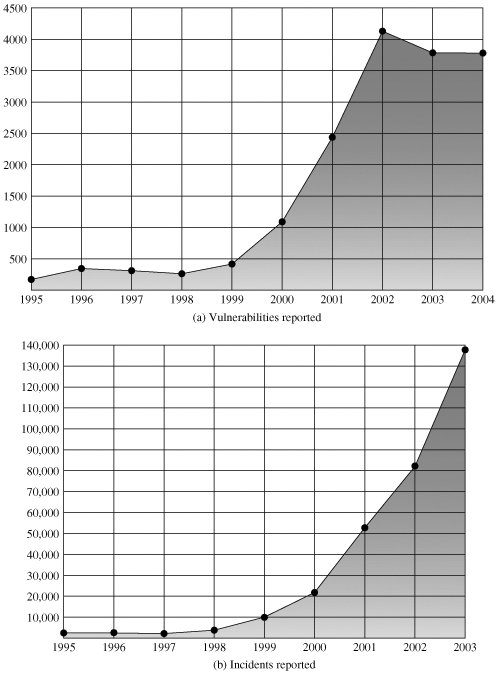Cryptography and Network Security (4th Edition)
1.1. Security Trends
In 1994, the Internet Architecture Board (IAB) issued a report entitled "Security in the Internet Architecture" (RFC 1636). The report stated the general consensus that the Internet needs more and better security, and it identified key areas for security mechanisms. Among these were the need to secure the network infrastructure from unauthorized monitoring and control of network traffic and the need to secure end-user-to-end-user traffic using authentication and encryption mechanisms. These concerns are fully justified. As confirmation, consider the trends reported by the Computer Emergency Response Team (CERT) Coordination Center (CERT/CC). Figure 1.1a shows the trend in Internet-related vulnerabilities reported to CERT over a 10-year period. These include security weaknesses in the operating systems of attached computers (e.g., Windows, Linux) as well as vulnerabilities in Internet routers and other network devices. Figure 1.1b shows the number of security-related incidents reported to CERT. These include denial of service attacks; IP spoofing, in which intruders create packets with false IP addresses and exploit applications that use authentication based on IP; and various forms of eavesdropping and packet sniffing, in which attackers read transmitted information, including logon information and database contents. Figure 1.1. CERT Statistics |

